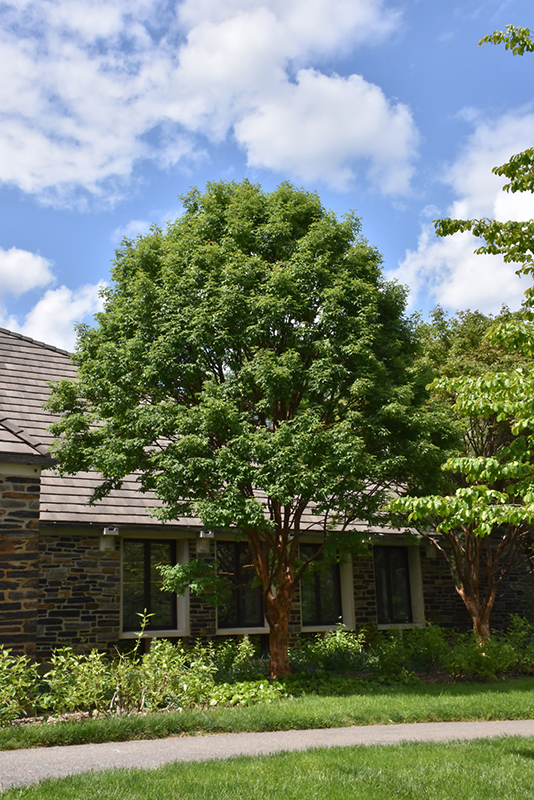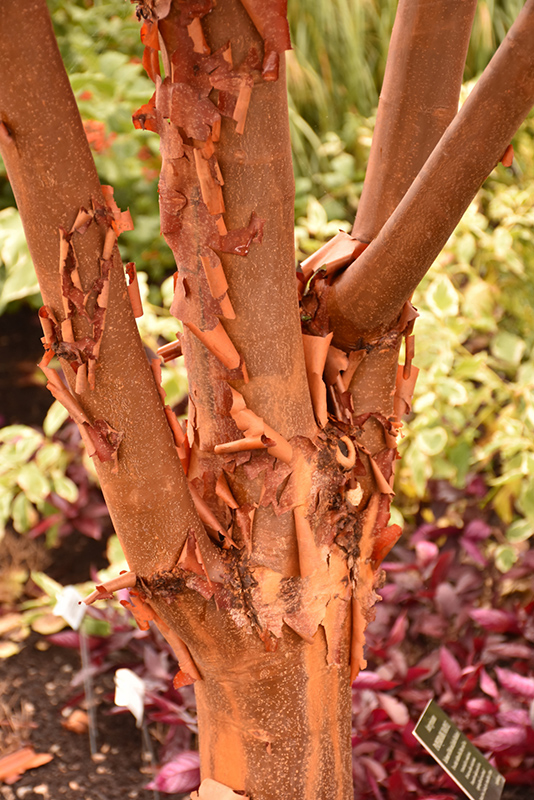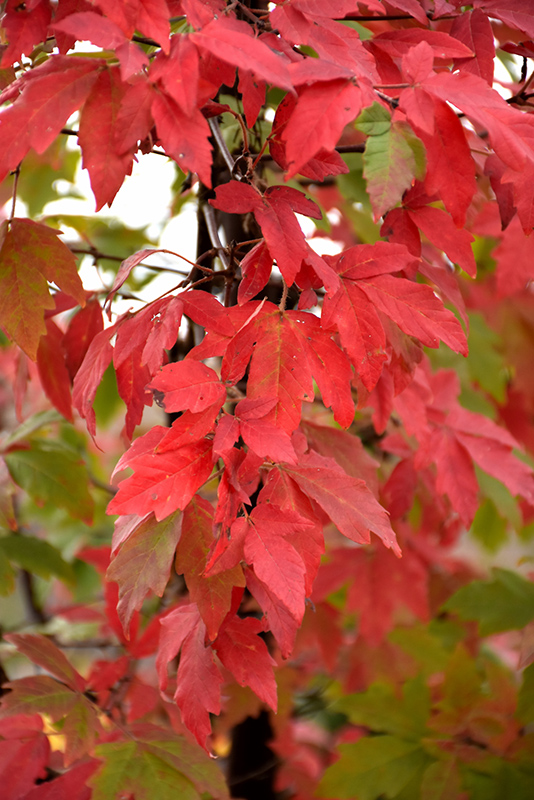Height: 25 feet Spread: 15 feet
Sunlight:
Hardiness Zone: 4b Description: This small ornamental tree is renowned for its exfoliating (peeling) bark in cinnamon red, pink and tan, along wth good fall color; an extremely high value accent tree for the winter landscape Ornamental Features Maple, Paperbark has dark green deciduous foliage on a tree with an oval habit of growth. The compound leaves turn outstanding shades of orange and antique red in the fall. The peeling antique red bark is extremely showy and adds significant winter interest. Landscape Attributes Maple, Paperbark is a deciduous tree with a shapely oval form. Its relatively fine texture sets it apart from other landscape plants with less refined foliage. This is a relatively low maintenance tree, and is best pruned in late winter once the threat of extreme cold has passed. It has no significant negative characteristics. Maple, Paperbark is recommended for the following landscape applications; Planting & Growing Maple, Paperbark will grow to be about 25 feet tall at maturity, with a spread of 15 feet. It has a high canopy of foliage that sits well above the ground, and should not be planted underneath power lines. As it matures, the lower branches of this tree can be strategically removed to create a high enough canopy to support unobstructed human traffic underneath. It grows at a medium rate, and under ideal conditions can be expected to live for 80 years or more. This tree does best in full sun to partial shade. It prefers to grow in average to moist conditions, and shouldn't be allowed to dry out. This plant should be periodically fertilized throughout the active growing season with a specially-formulated acidic fertilizer. It is not particular as to soil type or pH. It is somewhat tolerant of urban pollution. This species is not originally from North America. Special Attributes Paperbark Maples seeds are called the samaras, commonly known as helicopters for their winged shape. The size of seeds are about 1 inch long.![]()
![]()
![]()
![]()
![]()
![]()
![]()
![]()
![]()
![]()



